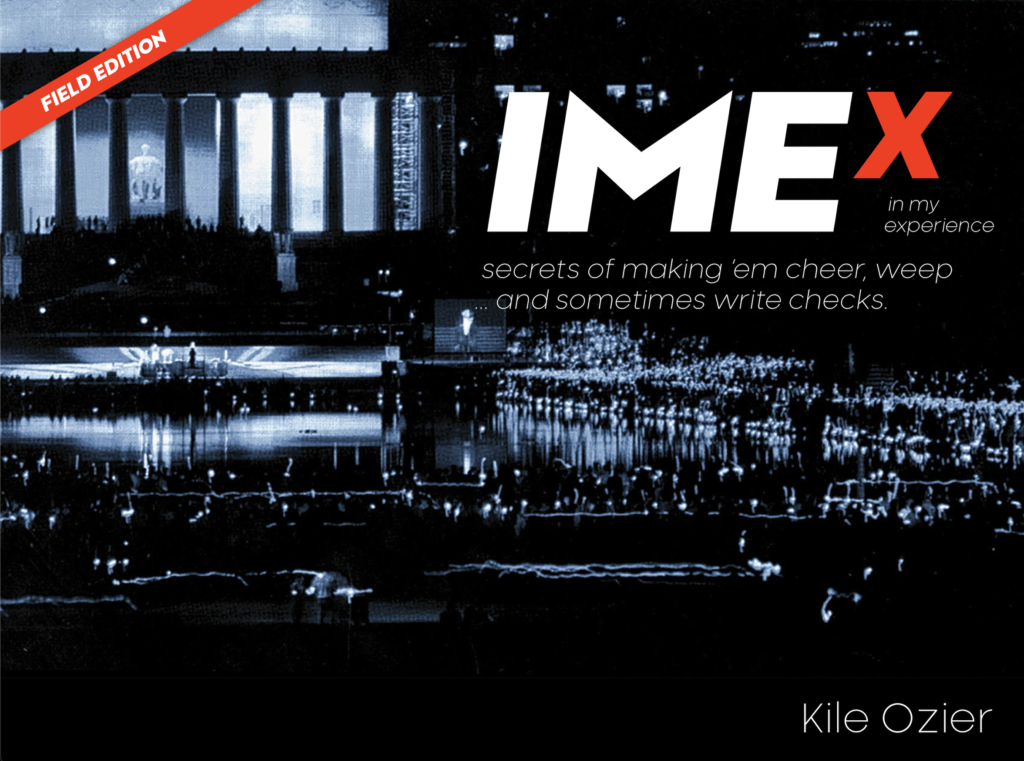
So, what is the EQ of AI?
Full Disclosure: I’m an Early Adopter of technology and am a part of probably of the next-to-last group of Digital Immigrants in the workforce. I’ve been an eager and hungry consumer of Science and Science Fiction since the ’50’s (That’s the 1950’s, whippersnapper!), taught Mac OS, iOS and Apps at Apple SoHo and SF periodically from 2009 – 2013. I love tech (for the most part); especially as it transitions to magic and new experience.
In the oft-quoted-by-me words of Arthur C. Clarke (…and if you don’t know who that is you’d best google and learn. He matters.):
“Any sufficiently advanced technology is indistinguishable from magic.”
Between AI and the encroaching, burgeoning metaverse, we are coming very close to the place where technology is virtually magic.
This excites and thrills me.
There is a conversation, though, that I’m neither seeing nor hearing being had that I think affects or may be affecting the depth to which our audiences will, can or may ultimately even be emotionally equipped to experience if not emotionally capable of handling as we breathlessly chase new technologies and new worlds to conquer and market as though it’s the day after Thanksgiving at Macy’s.
Maybe slow down a minute?
In what feels a breakneck race to seem relevant in embracing AI, “gamification” and what is currently being called “interactivity” – I’m sensing a dismissive overlooking of actual emotional investment in the outcome(s) of the experience offered. I’m seeing a change in the quality and character of the payoff as agency grows..
Increase in Agency offers, IMHO, an equal and opposite dilution of emotional investment in outcome. With increased individual agency; the analytical part of the brain comes more intensely into play, pushing aside empathetic engagement and replacing it with the visceral, the competitive, the self.
What I believe I see, in the stories being written and experiences created that give agency to the audience, viewers and participants…players, now… are stories with an arc of sorts – but the agency of the players creates a subtle change with critical affect.
When the audience member has some level of control, when one can “win” or accomplish some task or overcome some obstacle; the rush at the end is visceral, personal, exhilarating and wonderful…though neither empathetic nor sympathetic nor, from what I can see, emotionally engaging.
This is not a bad thing; it is a very good thing. It increases potential audience and vastly broadens the expanse of experiences and storytelling methodological tools available to us.
BUT, let us not lose sight of what this does not do for our audience. It does not engage them emotionally in a story that unfolds before them. It does not allow one to wonder and wander through questioning, hoping, imagining outcomes to be revealed; as agency supersedes all that.
With that, I’d like to see us, as we have our conversations, keep in mind the pliability of the human mind and collective memories brought to the storytelling experience and how those can be used and manipulated to create investment in what happens in a story.
Along these lines, I’m noticing a burgeoning conversation among people who pitch AI as creator of story: scripts written by Artificial Intelligence.
From where I stand at the moment, I can’t imagine a story written by a digital entity that can move an individual, emotionally.
My question at the outset is on what experience would this digital entity draw to create new stories with investible characters and experiences of the depth and substance that can bring emotion to the surface for the reader or performer? Can AI write stories in which we invest our hearts? I want this to be part of the conversation and am trusting we’ll see to it that it is.
In the coming weeks of conference season, as we gather in various halls and theatres around the world to share news and developments, rejoice and explore technologies and techniques, dig through the promised pot of gold at the end of this rainbow; let us not lose sight of how deeply we can reach with a well-told story.
Let us keep the goal of emotional connection in mind, if that is the goal; separate and apart from the visceral charge of winning and conquering…or can they live together? Well worth exploring and hopefully augmenting…though let’s not be too quick to eschew engagement at deeper levels.
(I’m just sayin’ <redacted>!)
I believe the new should be welcomed and embraced, tested and tried, carefully. As I said, above; I am excited at what technology and the New Tools represent for stories and their telling…the sense of disbelief hasn’t before seen anything this potentially powerful.
I would want us to honor and respect the organic muse within us as we do so.
IMHO.
________________________________________________________________________________

The third printing of “IMEx – In My Experience…” is pending (thank you, all!), and can hard copies are obtainable through me at Kile@kileozier.com.
And downloadable via Apple Books: https://books.apple.com/us/book/imex-in-my-experience/id1518649025
(Sorry y’all…kindle will only print in portrait, and the book is laid out in landscape. Please contact me for the solution if that’s an issue. Pas de probleme…
Random review:
“Empathize, Ideate, & Build” is the common doctrine of Design Thinking, and while they are inspirational points, they are hardly instructional. Kile has articulately laid out very actionable steps for any team involved in the creation and execution of Experience Design projects to follow on the path from concept to installation and operation.
In an industry that can be secretive, the How and Why of Experience Design can be lost as we celebrate the What. The simple roadmap that is presented in “In My Experience” outlines best practices for informed success along the life cycle of a project’s development. It’s not just a useful production tool, but also provides insight into the field for students interested in contributing to Experience Design or Themed Entertainment but who don’t fully realize all the working parts to the process.
A combination of process details, case studies, and first-hand stories as great examples makes this a delightful and credible read. Examples that take into consideration cultural and personality differences provide options for moving forward across a number of possible scenarios as both a contributor and a leader in the industry.
Marketed as a manual for the design of various experiences, it’s secretly an exhaustive manual for life.
Our industry mantra has become “story, story, story” But what does that actually mean? “In My Experience” graciously leads you down the path of story “revelation” best practices to carefully craft a very intentional emotional experience for your guests.
In an industry that only thrives on collaboration and mentorship, “In My Experience” continues the trend graciously sharing resources and inspiration across disciplines and generations.
-Mk Haley
Program Manager (Frmr) / Academic Outreach Walt Disney Imagineering
SIGGRAPH Conference Committee – Emerging Technologies Chair
UT Austin Faculty: Arts & Entertainment Technology
Worldwide Santa Network – Experience Design Consultant

The key word in your post is “Conversation.”
What most people refer to as AI, which includes “machine learning” is the ability for the computer to read and listen to humans in very comprehensive, analytical ways and predict and react very quickly with infinite variation. That is very different than “human intelligence” that works with “analogical reasoning.” As you have referenced with emotional and artistic expression.
What we need to start with is the acronym AI. Artificial Intelligence was a working term, but it is not “artificial intelligence” in that it is not to replace human intelligence. It is machine intelligence that woks analytically to appear to be analogical (to fool you was an early Turin tests). What the future is the conversation between machine learning and human reasoning that will become more than the sum of the parts. This is the magical part. There is nothing artificial both are real and augment each other. AI should stand for “Augmented Intelligence,” which has each intelligence augment the other.
What AI is not is “Artificial Imagination.” Scientist and engineers would like to “sell you” that idea, but it is snake oil to raise money and put a brain scan on their website to get more VC investment (true metric).
What this means for the future of Story is that we are inviting the audience into the story creation process with participating in the authoring, but not replacing the author. The AI is reading the user with perceptual computing and responding in a procedural way as in game mechanics and as programmed and play-tested by authors and players to learn how the author can collaborate with the audience’s contribution, presence and perception. This will make each story experience adapt to each audience in the most relevant way, based upon the author’s intent and audience response.
I like your suggestion of this conversation, but I think we need to lay down some terms and framework for that conversation and invite relevant thought leaders so it can lead to new and advanced creative heuristics. The key in pioneering the next generation of story technology is that the technology needs to be pushed to the limit as a function and the artist invents new creative conventions to extend the functional capabilities into creative possibilities. The artistic language of each medium is based upon the specific technology’s function and limitation.
IMHO
“honor and respect the organic muse within us”. After spending a lifetime cultivating my organic muse and creating relationships where others share their creative musings with me as well, it is hard to imagine a word where AI could do the same. However, even as I write this, I question it. The music and art that are being created are almost distinguishable. If AI learns to tell story, how far is that from sentience?
Hi Kile, we both share the same passion in creating memorable experiences for people looking and visiting entertainment arenas whether it is theme park / musical/ stage/ theater or many such venues.
I am responding to both of you here as I feel more appropriate.
Totally agree with you Christopher, and let me add that the organic / raw muse particularly as visionaries and new creative paths is electrifying as well that opens new possibilities. And with access to many tools and immersive technologies that we are fortunate today, I guess, the story building is more like a fusion and collaborative symphony of various elements. And today as the demand for more and more immersive entertainment is being envisioned, audience / visitor participation for heightened experience in a thematic setup without diluting the core of the total experience is adding another / new / final element to the total experience. IMHO,
Artificial intelligence itself does not tells any story but it will aid in totality of the experience / event. To me, the term artificial intelligence is somewhat vague with incomplete representation.
It could be aligned Intelligence rather than artificial intelligence. However, without dragging further into what and what not of AI is, creativity can utilize AI in furthering human experiences in the entertainment world. Of course a word of caution is that it should only be in the right direction. And I am looking forwards to creating these along with Kile in the team.